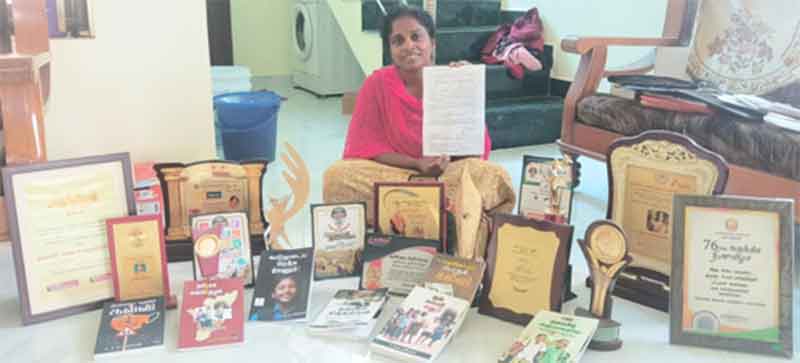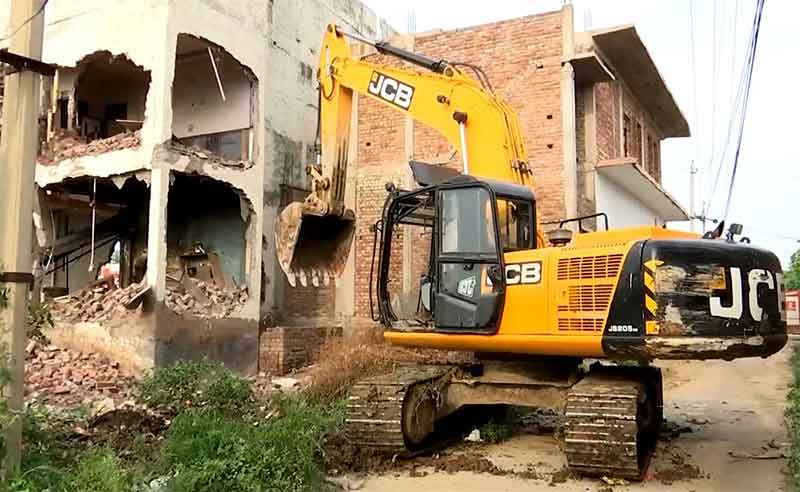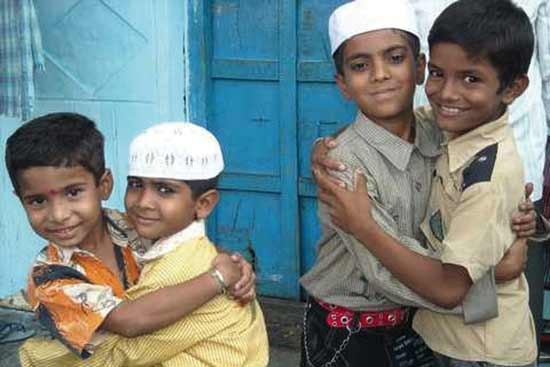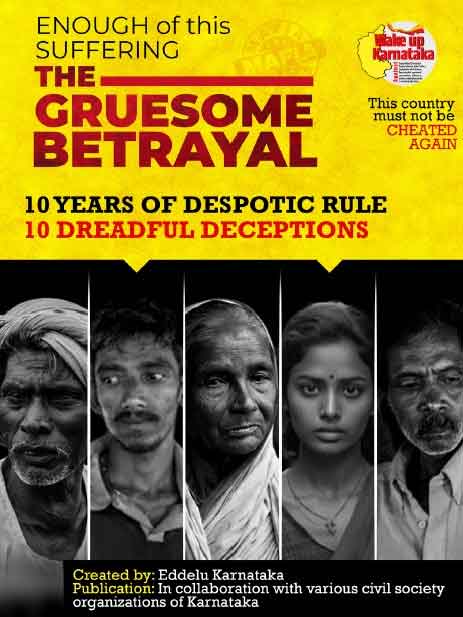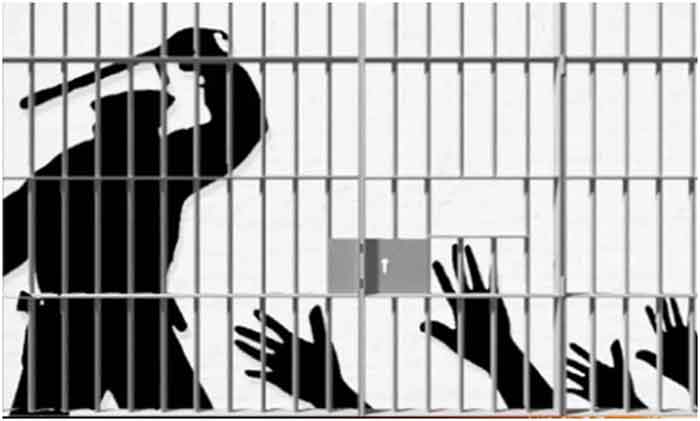
Article 21 which is Part III of the Indian Constitution secures both Right to life as well as the Right to personal liberty stating “no person shall be deprived of his life or personal liberty except according to a procedure established by law”. These Rights, described by the Supreme Court as the heart of fundamental rights,are available to citizens and non-citizens alike, cannot be suspended during an ‘emergency’, and move beyond mere existential rights to one of dignity.
Importantly, Article 21 also secures the Right to free legal aid, to speedy trial, to a fair trial, to have necessities of life in prison, for women to be treated with decency and dignity against handcuffing and against solitary confinement, inhuman treatment and custodial harassment.
Article 32 i.e., “Right to Constitutional Remedies”, which Dr. BR Ambedkar described as the heart and soul of the Constitution, affirms that no citizen should stay deprived of using their Fundamental Rights and has the right to move to the Supreme Court if any of the Constitutional Right of any citizen has been “unduly deprived”.
The roles and responsibilities of the Criminal Justice system
The Constitution allows the State, which includes the police and magistracy, to impose reasonable restrictions on some of the Fundamental Rights of the people in certain circumstances such as the prevention and control of crime, maintenance of public order and peace, protection of rights of victims as well as persons in conflict with law, punishment and rehabilitation of those adjudged guilty of committing crimes and generally protection of life and property against crime and criminality.
Investigation includes ascertaining of facts and circumstances of the case, spot verification, discovery and arrest of suspected offender and collection of evidence. The last include examination of the accused, getting a written statement, search and seizure of place as necessary for the investigation and to be produced at the trial, formation of opinion as to whether the basis of the material collected can be placed before a magistrate for trial and filing the chargesheet. The investigation ends in a police report to the magistrate.
Violations by the police
However, as very evident in recent times, the police have over-reached beyond their mandate. Public flogging, using bulldozers to bring down the houses of protestors, lathi charges, violence against children are being carried out by men and women in uniform. Concerns have repeatedly been raised about violations of basic rights by the police of people in custody. Two of these are custodial torture and disproportionate incarceration of dalit, Muslim and adivasi communities in prison.
Street vendors, women engaged in sex work, people in conflict with the law, refugees, migrant workers are regularly exploited for informal payments (mamool). and failure to pay puts them at risk of being picked up for petty crimes sometimes as ‘habitual offenders’. This extortion has become so common that it is almost normalised. The mamool is distributed across the board of the police structure. Reports show that deliberate delays in performance of normal assigned duties of the police could be to obtain money illegally/bribes.In several cities, there are informal relationships between the police and ‘gangs’.
Custodial torture
One of the serious concerns regarding the police is custodial violence and torture.For every case of custodial torture that results in death and which receives media attention, there are several that are unreported. Even if torture does not lead to death it can lead to extreme physical and psychological ill-health. Torture is often a way of humiliating people and sending a threat to the person’s family or community.
Torture is defined as ‘any act by which severe pain or suffering , whether physical or mental, is intentionally inflicted on a person by or at the instigation of or with the consent or acquiescence of a public official or other person acting in an official capacity .
In India, there are several judgments by the High court and Supreme court that it is not permissible for police to inflict even the slightest physical harm to anyone except in his own self defence. The law places the person in custody on par with other citizens in that regard. Concerns regarding custodial torture have been raised by the the National as well as State Human Rights Commissions.
In the case of Sunil Batra vs Delhi administration (20th December 1979), Article 32 of the Constitution was invoked to place responsibility on the court to intervene and protect a prisoner who had been tortured. The Supreme court issued notice to the State and concerned officials and appointed an amicus curiae to access relevant documents and interview witnesses as well as the person in prison. Following the indicting report of the amicus curiae, the Superintendent was held responsible for torture and action initiated against the investigating police. The Court affirmed that prisoners are persons and to deny this would convict the nation and the Constitution of ‘dehumanisation and to repudiate world legal order which now recognises rights of prisoners in the International Covenant on Prisoner Rights to which our country has signed assent”.
The order also stated that
“Protection of the prisoner within his rights is part of the office of Article 32. [564 C]. It behoves the court to insist that, in the eye of law, prisoners are persons not animals, and to punish the deviant ‘guardians’ of the prison system where they go berserk and defile the dignity of the human inmate.”
“Prison houses are part of Indian earth and the Indian Constitution cannot be held at bay by jail officials ‘dressed in a little, brief authority’. When Part III is invoked by a convict. When a prisoner is traumatized, the Constitution suffers a shock.”
Importantly, the Court stated that fundamental rights do not flee a person as he enters the prison although they may suffer shrinkage necessitated by incarceration.
A total of 4,36,732 inmates went outside the jail premises for medical attendance during the year 2021. Chhattisgarh has reported the highest number of times inmates who went outside for medical issues (63,896) followed by West Bengal (40,657) and Tamil Nadu (36,097) accounting for 14.6%, 9.3% and 8.3% of the total such movement of inmates. It is well known that when people in custody have been subjected to torture, it can manifest as a health issue either immediately or over a period of time. Often doctors treat the person and send them back to the same torture instead of piecing together the evidence from history and clinical examination and alerting suitable authorities that the person is being subjected to torture. This is a crucial role of the health system and must be emphasised during medical education and other training.
A total of 9,180 inmates were reported as mentally ill out of a total 5,54,034 inmates lodged in various jails in the country as on 31st December, 2021, accounting for 1.7% of total such inmates. Out of 9,180 inmates suffering from mental illness, 41.3% (3,787) were convicts, 58.4% (5,365) were Undertrials and 0.3% (23) were Detenues as on 31st December, 2021. Mental illness could be a manifestation of various issues which need to be explored, documented and addressed. While some people in custody struggle with lack of support mechanisms, others may have developed mental health issues following torture, negligence, nutritional and other health deficiencies and poor health.
2,116 prisoners have died while they were in judicial custody in India during 2021, out of which, 1,879 were natural deaths, 185 were due to unnatural causes and 52 deaths were reported as causes not known yet. Natural deaths accounted for 88.8% (1,879 out of 2,116) and Unnatural deaths accounted for 8.7% (185 out of 2,116) of the total deaths. Out of 150 suicides, the predominant mode was Hanging (139) followed by Poisoning (3), Self-Inflicted Injury (2), Drug Overdose (1) and Others (5).
Among the 185 unnatural deaths in prison, apparently 150 were due to suicide, 11 murdered by inmates, 6 by accident, 3 due to assault by outside elements, 1 due to firing and 1 due to negligence/excess. For a total of 52 inmate deaths the cause is unknown. Alarmingly, deaths due to custodial torture are not even a category for the records. It is to be remembered that for every death due to torture there are several others who have faced torture. Death should not be our measure of human rights violation..
According to the Prison Statistics India 2021, a total of 376 complaints were apparently received by the NHRC in 2021 and 470 by the State Human Rights Commission. However, the reason for these complaints not been clearly mentioned. .
Accidental Deaths mostly occurred due to Fall (2), Electrocution, Road/Train Accident, Drugs/Alcoholic Consumption and Others (1 each) (Table 8.7). Uttar Pradesh has reported the highest number of unnatural deaths (42) followed by Haryana and West Bengal (16 each) and Delhi (12). Out of 150 suicides, Uttar Pradesh has reported the highest number of suicides (34) followed by Haryana (14), Kerala, Madhya Pradesh and West Bengal (10 each) and Delhi (8) during 2021. Three Deaths due to Assault by Outside Elements were reported during 2021
Disproportionate incarceration of marginalised communities
Extremely serious concerns have repeatedly been raised about the disproportionate incarceration of marginalised communities, specifically dalits, adivasis and Muslims in Indian prisons. An analysis of the NCRB data as of 27th December 2021 showed that although the Muslim population in India was 14.2%, Muslim prisoners constituted 19.1% of the population. 19.5% of all undertrials, 17.4% of all convicts, 30% of detainees and 57.2% of other prisoners. Researchers see this as related to the community’s overall socio-economic condition and lack of access to opportunities of education, health, employment.
Likewise 20.7% prisoners belong to the Scheduled caste and 11.2% to the Scheduled tribes whereas their proportion in the general population is 16.1% and 8.2% respectively. In UP, 20% convicts, 28.3% undertrials and 50% detainees were Muslim in 2020. This pattern of supposed targeting of Muslim men is seen even in Gujarat, Maharashtra and Madhya Pradesh. A majority of Muslim prisoners (65.5%) were in the age group 18-30 years followed by 26.3% in the 31-40 year group. Among 19 prisoners sentenced to death in Gujarat, 15 were Muslim and in Karnataka of the 45 sentenced to death, 10 were Muslim. Ironically there is very poor representation (6.4%) of Muslims in the police force. Threats of being slapped with regressive laws such as the Unlawful Activities Prevention Act (UAPA) and custodial torture can so metimes force people in custody to ‘accept’ crimed even if they are actually innocent.
Even more disturbing, in a study done with support from the Maharashtra State Minorities Commission, senior officials have acknowledged that police bias may be a factor behind the disproportionate number of Muslims in jail and that policemen routinely pick up some men thus profiling them as criminals. There were also instances of fabricated cases on Muslims.
In India it is well known that police tend to arrest people who meet certain descriptions. In India, being SC/ST and/or Muslim is a high risk factor to be picked up by the police and has led to a fear among the communities even to perform ordinary activities. Under pressure by the politicians and middle class to arrest the ‘accused’ often these young men are picked up in lieu of upper class criminals. The torture and violence that goes on in prisons to get people to ‘confess’ crime is not even a secret any longer. The fact that many of the undertrials do not have the necessary social capital, media coverage, civil society networks or plain economic power, means that they do not have the band-width to get out of prisons even in bailable cases.
States have introduced video-conferencing facilities for virtual production of prisoners before the courts. This means that those who are being tortured or discriminated can lose out on the opportunity to share their distress or seek recourse to justice under Article 32. The opportunity for magistrates to observe incarcerated persons for evidence suggestive of torture should not be lost in the interest of ‘efficient time management’
Although CCTV cameras have been installed in some prisons and police stations, violence and torture can occur outside the scope of the cameras. While cameras can serve as a deterrent to some extent, the real oversight comes from reinforcing the rights of people in custody and the larger society holding the system accountable. Serious responses to even small instances of human rights violation can go a long way in making the system accountable and open to public scrutiny.
Undertrials and convicts
A sensitive measure of how discrimination operates in prisons is to compare the proportion of undertrials from a certain community with its proportion in the general population. If the percentage of undertrials is significantly more than the percentage in the population, then one can assume that this community is being targeted disproportionately. Comparing undertrial proportions with conviction rates also gives a general idea of the processes of incarceration and the justice system of the country. Placing people as undertrials has a lasting impact on the detainee, his family and friends as well as society at large. It leads to severe financial, social, health and psychological consequences. Importantly, India’s Constitution, Article 22(2), mandates that anyone detained upon arrest must appear before a magistrate judge within 24 hours of arrest or be released. As of September 2014, in accordance with an order by India’s Supreme Court, all undertrials in India who have remained in detention for over half of the maximum penalty time for their charged crimes must be released. It appears many of these detainees have still not been released.
According to the Prison Statistics India 2021 by the National Crime Records Bureau (NCRB), of the total of 5,54,034 inmates, undertrials constituted 77% (4,27,165) and convicts were 22% (1,22,852). In 2021, Uttar Pradesh has the maximum number of undertrials in the country (21%, 90,6060 undertrials), Bihar had 59,577, Madhya Pradesh 29,094, Karnataka 11689
UP has reported the most number of convicts (21.9%, 26,956) followed by Madhya Pradesh (15.7%, 19,266) and Chhattisgarh (6.3%, 7,762). As far as undertrials are concerned, Uttar Pradesh has again reported the maximum (21.2%, 90,606), followed by Bihar (13.9%, 59,577) and Maharashtra (7.4%, 31,752)
There were 1650 women prisoners with 1,867 children. Among the women prisoners, 1418 were undertrial accompanied by 1601 children and 216 convicted prisoners were accompanied by 246 children. Uttar Pradesh reported the highest number of women with children (379 women with 428 children) followed by Bihar (304 women with 344 children) and West Bengal (165 women with 199 children).
Poor investigation and oversight of ‘unnatural’ deaths and health issues
Occupancy rate of prisons in Uttarakhand and Uttar Pradesh was 185, 167% in Sikkim, 164% in Madhya Pradesh, 160% in Meghalaya, 149% in Maharashtra, Delhi 182%. This kind of overcrowding violates human rights and this was of concern during the pandemic.
It is important to view the situation of these communities outside the prison walls. These communities are economically and socially backward and face different forms of marginalisation and discrimination. They have lower literacy rates, limited access to both primary and higher education, higher poverty rates, unemployment, and lesser average land holdings. These are the communities that also face caste, gender and religion based discriminaiton.
While dalits and adivasis have faced caste based oppression for generations, the Muslim community is openly being discriminated, targeted and threatened in full public view and public spaces by those in authority, power and elected representatives. One has to then understand that these violations can only increase exponentially within spaces like police stations and prisons where these communities are extremely vulnerable.
As society, we have to acknowledge that people incarcerated from these communities are more likely to experience the following
- Improper access to legal advice
- Lesser awareness of their rights vis a vis the police, judiciary, prison systems etc. which limits their ability to procure documents, apply for bail, verify authenticity of charges against them, petitioning higher authorities etc.
- Prejudice and discrimination from the police, courts, civil society and human rights organisations. The inherent prejudices and hate outside the police station and prison can increase manifold within these spaces making these persons extremely vulnerable to torture, denial of justice, abuse, neglect and human rights violation.
Among foreign convicts, 74.6% were undertrials and 19.4% were convicts. The highest number were from Bangladesh (46.8%) followed by Nepal (26%). Given the general suspicion around ‘Bangladeshis’ it would be important to understand how larger discrimination manifests in prison settings.
Possible actions
The preponderance of these marginalised communities in prisons as a marker of the larger social and economic discrimination that they face should not be ignored and these indicting statistics are a call for action by state governments. Addressing inherent prejudices within society should work in tandem with holding police and prisons systems accountable to ensure that they are upholders of law and the Constitution and not a mere extension and amplifier of existing social prejudices.
The deep rooted social stigma towards these communities and poor understanding of Constitutional rights means that society often turns a blind eye to human rights violations. The notion that if someone is a ‘criminal’ or a ‘threat to the nation’ or ‘anti-social’ means that they have no rights to even basic human rights and dignity puts these individuals at extreme risk of violence and no recourse to justice because it is a situation of an individual or family or community against an entire system or structure.
The extreme political influence over the police and even judiciary should be addressed by civil society and human rights organisations. Police cannot inflict violence at the beck and call of the party in power. The police cannot be used as tools to teach certain communities a lesson so that they do not even demand their basic rights as sanctified by the Constitution.
There is a need for people who are most vulnerable and from these communities to be identified and additional support offered to them whether it is legal aid, bail, rehabilitation, compensation or reparation. Unless the vulnerable are proactively identified and supported they will fall through all safety nets and human rights protective mechanisms.
Many of these prisoners have been falsely incarcerated, have been picked up because they are vulnerable and without social networks or support, because they have protested against violation of their rights such as takeover of their lands by corporates, caste atrocities, infrastructure projects etc. While the media highlights some of these instances and human rights organisations and commissions have taken them up there needs to be sustained commitment to justice and systems to challenge people being arrested for demanding their constitutional rights. The anti CAA protests have seen large scale violations of these rights. The Bhima Koregaon arrests are another proof.
Decentralised legal aid cells supported by competent lawyers could help reduce the percentage of marginalised groups in Indian jails too,
All suspicion or allegations of torture must be investigated by the state. Torture is never justified, whatever the circumstances. [1]
If the Medical officer in the prison has reason to believe that the mind of a prisoner is, or is likely to be, injuriously affected by the discipline or treatment to which he is subjected, this should be reported to the Superintendent and the report forwarded to the Inspector General. If a prisoner dies, the Medical officer should record the day on which the deceased first complained or observed to be ill, the labour he was engaged on that day, his diet, the day he was admitted to the hospital, the day when Medical officer was first informed of the illness, the nature of the disease, when he was last seen by the medical officer before death, when he died, and post mortem appearance after death.
Every criminal prisoner shall as soon as possible after admission be examined by the Medical officer who shall write a record of the state of health, wounds or marks. In the case of female prisoners, it should be carried out by the matron.
The prison Act also states that no cell shall be used for solitary confinement unless furnished with means of enabling prisoners to communicate and every prisoner confined for more than 24 hours should be visited by the medical officer.
When data shows the government in a bad light then the approach seems to be to make this data unavailable, to manufacture or mislead, or to altogether stop collecting the data. In reality, more data needs to be made available so that there is an objective assessment of where and what violations are present as a first step towards addressing the violations. India should also be open to international reviews of our human rights and take adverse reports seriously. Posturing or denial can only mean that we move further and further away from the truth, from human rights and from the Constitution.
Sometimes the police and prison systems judge people from dalit, adivasi and Muslim communities as guilty and then go about trying to extract a confession from them.
Any information that is obtained after torture cannot be accepted in a court of law and has been found to be unreliable and under duress. The court is required to reject this ‘evidence’. The court cannot act out of revenge or compete with the accused person’s crime of devaluing life, property and dignity of their victims. The State and court has to rise above rhetoric to show exemplary jurisprudence and alignment with Constitutional guidelines.
There are no checks and balances within police stations and prisons on how discrimination plays out based on the caste, gender, religion, physical ability, geographic location, sexual orientation, age etc. of the person in custody. Given the extreme power imbalance between the police and persons in custody, there is an urgent need for strict oversight and monitoring to identify and prevent these violations. In the event that discrimination has taken place, the appropriate legal actions should be initiated.
Conclusion
There should be no doubts or lack of clarity among the prison systems or general society that prisons are not meant to be torture chambers even for the worst crimes. Discrimination and violence meted out to the dalit, adivasi and Muslim communities in the larger society cannot be replayed within the prison systems. That these communities are more likely to face violence, discrimination, negligence, denial of bail or access to a lawyer only means that much more needs to be done to protect them and hold systems accountable. In this, both the legal as well as the healthcare system can set an exemplary trend that they hold Constitutional principles and human rights above all political, religious, caste or ideological structures.
As a society, we need to ask ourselves whether the disproportionate incarceration and vulnerability to custodial violence of some communities is a reflection of a larger social problem. Should we normalise or legitimise these violations or ask crucial questions challenging them?
Adv Jerald D’souza is an Advocate and Director of St. Joseph’s College of Law, Bengaluru
Twitter @JeraldSJCL
[1] Article 2 of the UN Convention against Torture and other Cruel, Inhuman or Degrading Treatment or Punishment states:
“1. Each State Party shall take effective legislative, administrative, judicial or other measures to prevent acts of torture in any territory under its jurisdiction.
“2. No exceptional circumstances whatsoever, whether a state of war or a threat of war, internal political instability or any other public emergency, may be invoked as a justification of torture.
“3. An order from a superior officer or a public authority may not be invoked as a justification of torture.”




